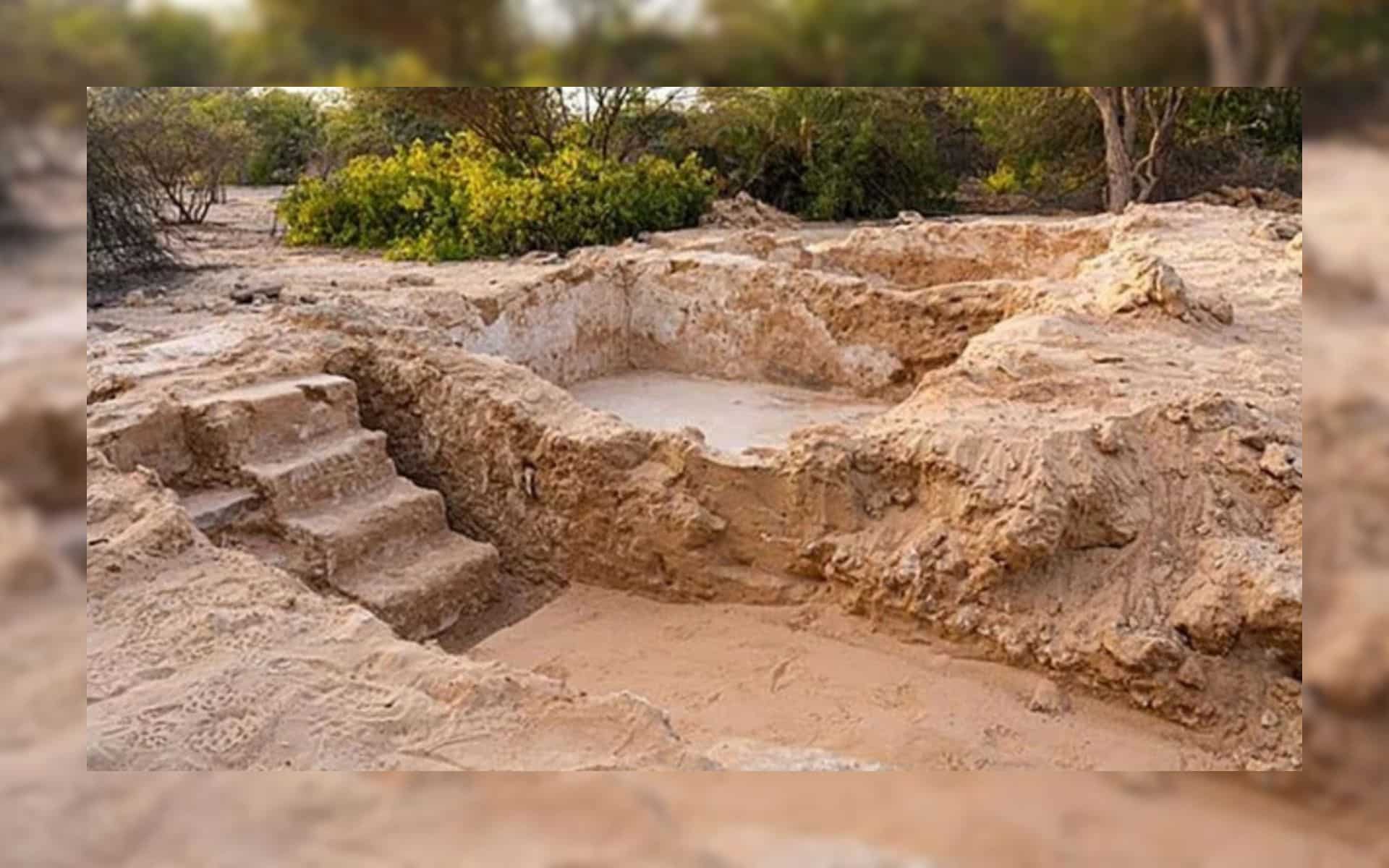Archaeologists have uncovered an ancient cross that could reshape our understanding of Christianity’s spread, offering new insights into its presence in the Arabian Gulf over 1,400 years ago.
Archaeologists have uncovered an ancient cross that could significantly alter our understanding of early Christianity. The 1,400-year-old artifact, discovered during recent excavations, features distinct Christian symbols that highlight the spread of the religion beyond traditionally recognized regions.
The cross’s unique design offers new insights into the cultural and religious exchanges that took place during the 6th and 7th centuries. This discovery, reported by GB News, promises to challenge previously held beliefs about the early history of Christianity in the Arabian Gulf, offering a fresh perspective on the geographical extent of Christian influence during this period.
One of the most striking aspects of this ancient cross is the symbolism it carries. The cross features a stepped pyramid motif representing Golgotha, the hill where Jesus Christ was crucified according to Christian tradition. The inclusion of this specific representation on the cross suggests that the Christian community in the Arabian Gulf was closely tied to traditional Christian iconography, despite being far from Jerusalem.
The cross also features intricate regional motifs, blending local artistic traditions with Christian religious symbols. This indicates that Christianity in the region adapted visually to its environment. The representation of Golgotha suggests that worshippers in this area were not only aware of Christ’s crucifixion but likely observed it as a central tenet of their faith.
This finding highlights the cultural exchange that occurred as Christianity spread beyond the Levant and into regions like the Arabian Peninsula.
The lead archaeologist of the site, Maria Gajewska, explained,
“Every element of the cross incorporates regional motifs. It tells us that Christianity in this region was not only present but flourished, adapting visually to its local context. We had settlements of Christians that were not just existing but were clearly thriving. “- This statement underscores the importance of the discovery in understanding the spread and growth of Christianity in the Arabian Gulf.”
This discovery challenges the prevailing notion that Christianity had faded in the Arabian Gulf by the time of Islam’s rise. Historically, it has been believed that by the 7th century, Christianity was in decline across the Arabian Peninsula, with the region mostly under the influence of pre-Islamic polytheism. However, the discovery of this ancient cross, along with other artifacts, shows that Christian communities in the region were thriving much later than previously thought.
The cross, along with pottery, glass objects, and remnants of a church and monastery found in earlier excavations, paints a picture of a flourishing Christian community on Sir Bani Yas Island. The presence of religious artifacts, including a small bottle that may have contained rosewater or oil for anointing, further suggests a well-established Christian tradition on the island.
The archaeologist at the Department of Culture and Tourism, Hager Al Menhali, shared,
“The plaster was resting face down and something about it caught my attention.”
This suggests that the ancient cross may have been placed on a wall, where worshippers could have knelt in prayer before it. The discovery of a fingerprint on the back of the plaque adds a personal touch, possibly offering insight into the lives of the individuals who created or used the artifact.
In addition, the site’s lack of destruction debris—such as rubble—has led archaeologists to believe that the community may have left voluntarily, rather than being displaced by conflict. This adds a layer of mystery to the reasons for the settlement’s decline and raises questions about what led to the eventual departure of these Christians from the island.
The significance of this discovery extends beyond the religious history of Christianity. Archaeologists have noted that the ancient cross incorporates regional elements, reflecting the openness of the Christian communities in the Arabian Gulf to local customs and practices. This finding underscores the cultural integration that took place between early Christians and the diverse societies of the region.
Chairman of the Abu Dhabi Department of Culture and Tourism, Mohamed Khalifa Al Mubarak, emphasized the importance of these discoveries in highlighting the UAE’s deep-rooted values of coexistence and cultural understanding.
Al Mubarak said,
“These discoveries deepen our connection to the past and inspire future generations to embrace the spirit of unity and mutual respect that has long defined our community.”
© 2024 | Indian Defence Review | All rights reserved
